Is Denim Cotton? Benefits, Care & 2025 Trends
Denim fabricb has been a cornerstone of style and function for over a century. From workwear to excessive fashion, this iconic fabric keeps to captivate. In this text, we delve into the benefits of denim, its diverse kinds, its role in way of life and fashion, its environmental footprint, and greater, answering commonplace questions and showcasing standout products just like the A.P.C. 'kylie' Straight Leg Jeans.
1. Advantages of Denim Fabric
Denim fabric, with its rugged roots and timeless appeal, sticks out as one of the maximum versatile and liked substances within the world. From my own revel in breaking in a pair of raw denim denims that looking them mould to my shape over months. I’ve come to understand why this material has endured for over 150 years. Its specific combination of durability, comfort, aesthetic attraction, and flexibility makes it a cornerstone of both everyday wardrobes and high fashion. Below, I discover the key benefits of denim, subsidized by way of facts and actual-world insights, to reveal why it remains unrivaled
Exceptional Durability for Long-Lasting Wear
Denim’s hallmark is its power, owed to its twill weave shape, where indigo-dyed warp threads bypass over a couple of white weft threads, growing a diagonal ribbing sample. This production, usually in a 3x1 or 2x1 configuration, enhances tensile strength, making denim a ways more difficult than simple-weave cotton. According to a study by way of the Textile Institute, fantastic denim can attain a tear strength of up to 50 Newtons, as compared to about 20 Newtons for general cotton shirting ( Textile Institute, 2019 ). A 14-ounce pair of Levi’s 501 jeans, for example, can endure years of heavy use ,whether you’re hiking trails or navigating urban existence, and without fraying or tearing. This durability, born from denim’s origins as 1850s workwear for miners, ensures it’s a realistic choice for the entirety from rugged jobs to every day commutes.
(PIC From PIN)

Comfort That Gets Better with Time
At its core, denim is typically one hundred% cotton, presenting herbal breathability that keeps you cool in summer time and cozy in cooler months. Unlike artificial fabric like polyester, which can trap warmth, denim wicks moisture correctly, making it best for numerous climates. Over time, the fabric softens and conforms on your body, growing a bespoke fit that feels like a 2d pores and skin. I’ve observed this with my own denim jacket. It began stiff but now drapes flawlessly after months of wear. Available in weights from nine oz to twenty oz. (heavy outerwear), denim caters to diverse comfort desires, making sure there’s a super choice for each season and interest.
Timeless Aesthetic with Personalized Charm
Denim’s visual allure lies in its indigo-dyed warp and white weft, producing a deep blue front and lighter back that’s instantly recognizable. What sets it apart is its ability to evolve that natural wear and washing create unique fade patterns, like whisker marks at the thighs or honeycomb creases behind the knees. A 2021 report by Cotton Incorporated found that 73% of consumers value denim’s “lived-in” look, which no other fabric replicates ( Cotton Incorporated, 2021 ). Raw denim fans, like those wearing Nudie Jeans, cherish this process, documenting fades over years for a one-of-a-kind piece. Even pre-washed denim, like Levi’s Wedgie Fit, offers instant vintage appeal with soft textures.
(PIC From PIN)

Sustainable Potential with Modern Innovations
While traditional denim production has environmental challenges (more on that later), its durability inherently reduces waste that fewer replacements mean a lower lifecycle impact. A 2017 Ellen MacArthur Foundation report estimates that extending clothing life by 50% can cut environmental costs by 20-30% ( Ellen MacArthur Foundation, 2017 ). Modern advancements amplify this: recycled denim, used by brands like A.W.A.K.E. MODE, repurposes about 500 grams of textile waste per garment, per Textile Exchange data ( Textile Exchange, 2022 ). Levi’s Water<Less technology slashes water use by up to 96% compared to traditional methods, which guzzle 5,700 liters per pair ( Levi Strauss & Co., 2020 ). Unlike disposable fast-fashion fabrics, denim’s longevity and eco-friendly options make it a forward-thinking choice.
2. Denim in Popular Culture and Fashion
The Rebel’s Uniform Through History
Denim’s story began in the 1850s when Levi Strauss made tough pants for gold miners, reinforced with rivets for durability ( How Levi Strauss turned miners' workwear into the classic blue jeans we love ). By the 1950s, it was the emblem of defiance. James Dean’s jeans in Rebel Without a Cause spoke louder than words, inspiring teens to ditch conformity. The 1960s counterculture stitched peace signs onto denim flares, and 1980s punks slashed theirs to match their raw edge. A Medium Article survey found some people still see denim as a symbol of “individuality,” a vibe that carries ( Medium, How Blue Jeans Became a Social Equalizer ). Today, this spirit persists. Diesel’s Spring 2025 distressed jeans, with rips echoing 1970s anarchy, are a nod to that legacy, worn by fashion insiders at Paris Fashion Week ( Vogue, 2025 ).
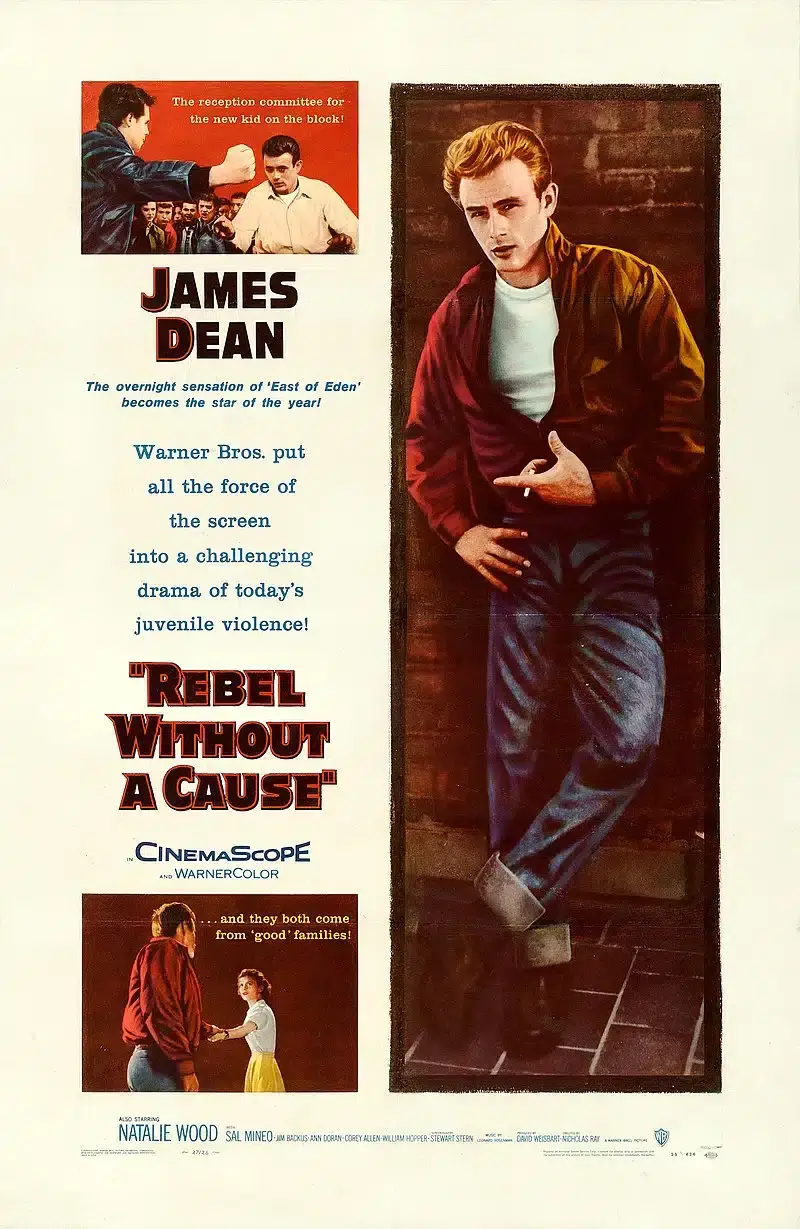
Iconic Pop Culture Moments
Denim has defined eras through unforgettable looks. In 1980, Brooke Shields’ Calvin Klein jeans ad “Nothing comes between me and my Calvins” that making denim sexy and mainstream. Fast-forward to 2001, Britney Spears and Justin Timberlake’s double-denim AMA outfits became a Y2K legend, revived in 2025 by Chanel’s crystal-embellished denim sets ( nss, Everybody loves bedazzled denim ). Recently, Beyoncé’s 2024 Cowboy Carter track “Levii’s Jeans” sparked a Western revival—her Wrangler flares at a Grammy afterparty drove a 114% spike in bootcut searches, per Data But Make It Fashion ( The Guardian, Beyoncé effect: Cowboy Carter album puts Levi’s on fashion hotlist ). These moments cement denim’s ability to steal the spotlight, turning everyday wear into cultural shorthand.
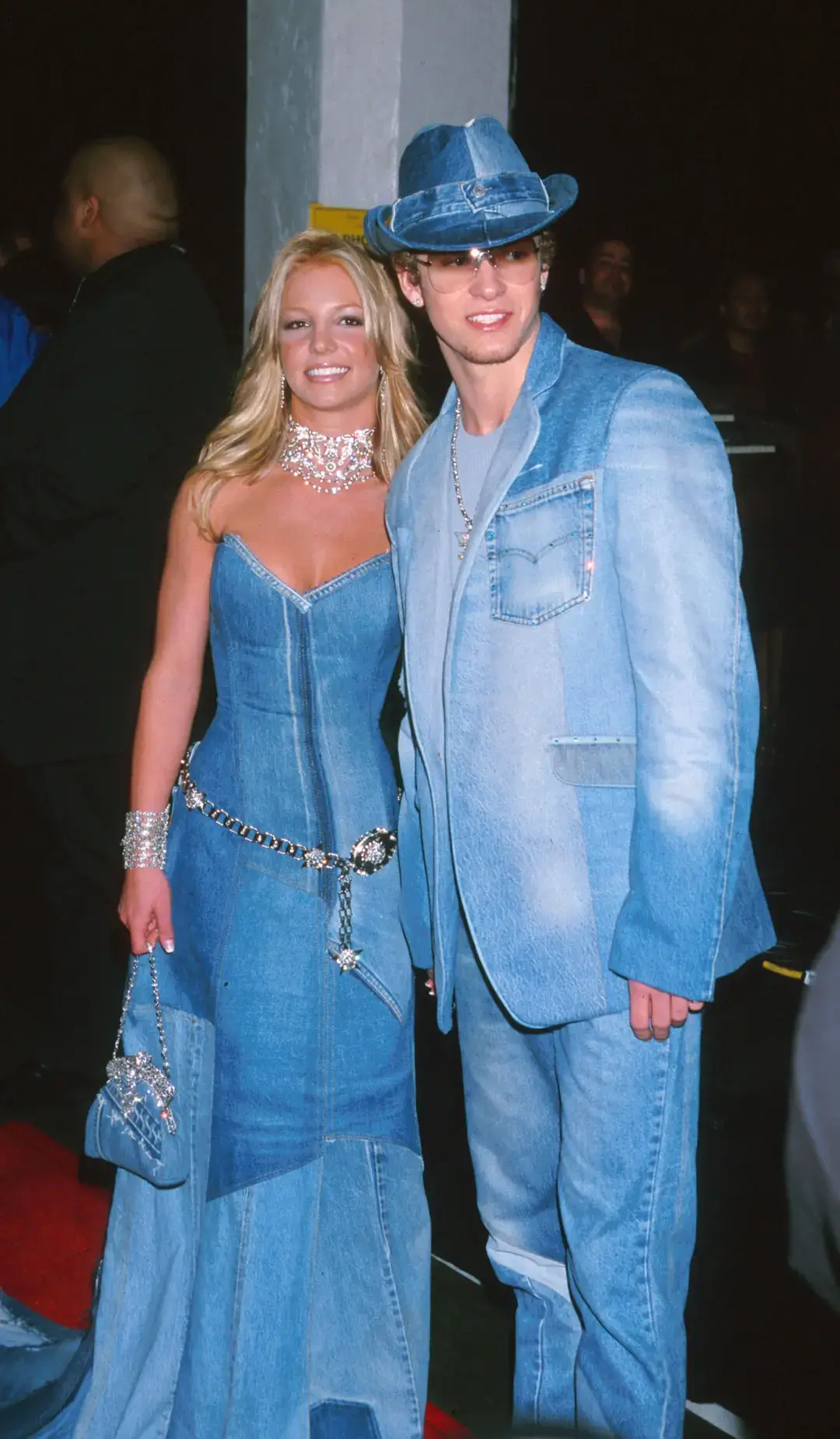
Celebrities Rocking Denim in These Years
Katie Holmes
Holmes collaborated with A.P.C. for a capsule collection, including zero-stretch dark-wash wide-leg jeans. Seen in New York, she styles them with a crisp white shirt, blending polish with ease. A look that screams 2025’s minimalist chic.
From: WWD, Katie Holmes x A.P.C. Collaborate on Collection That Merges French Elegance With New York Sensibility
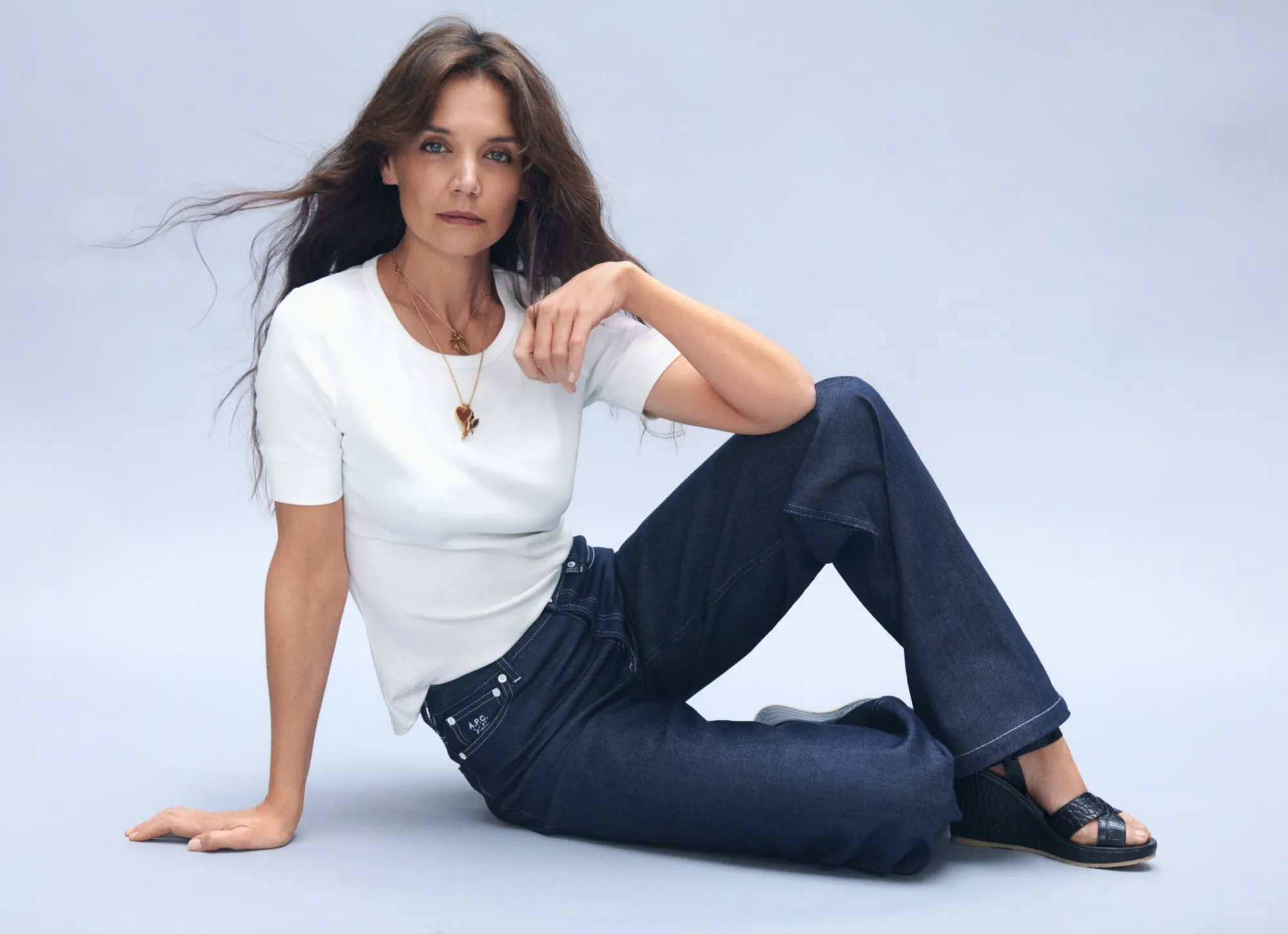
Julianne Moore
Moore embraces the Canadian tuxedo, wearing Gap’s barrel-leg jeans with a matching denim vest at a film premiere. Her tailored take elevates the trend, showing denim’s red-carpet potential.
From: Vogue, Julianne Moore Test Drives the Jean Silhouette of the Season
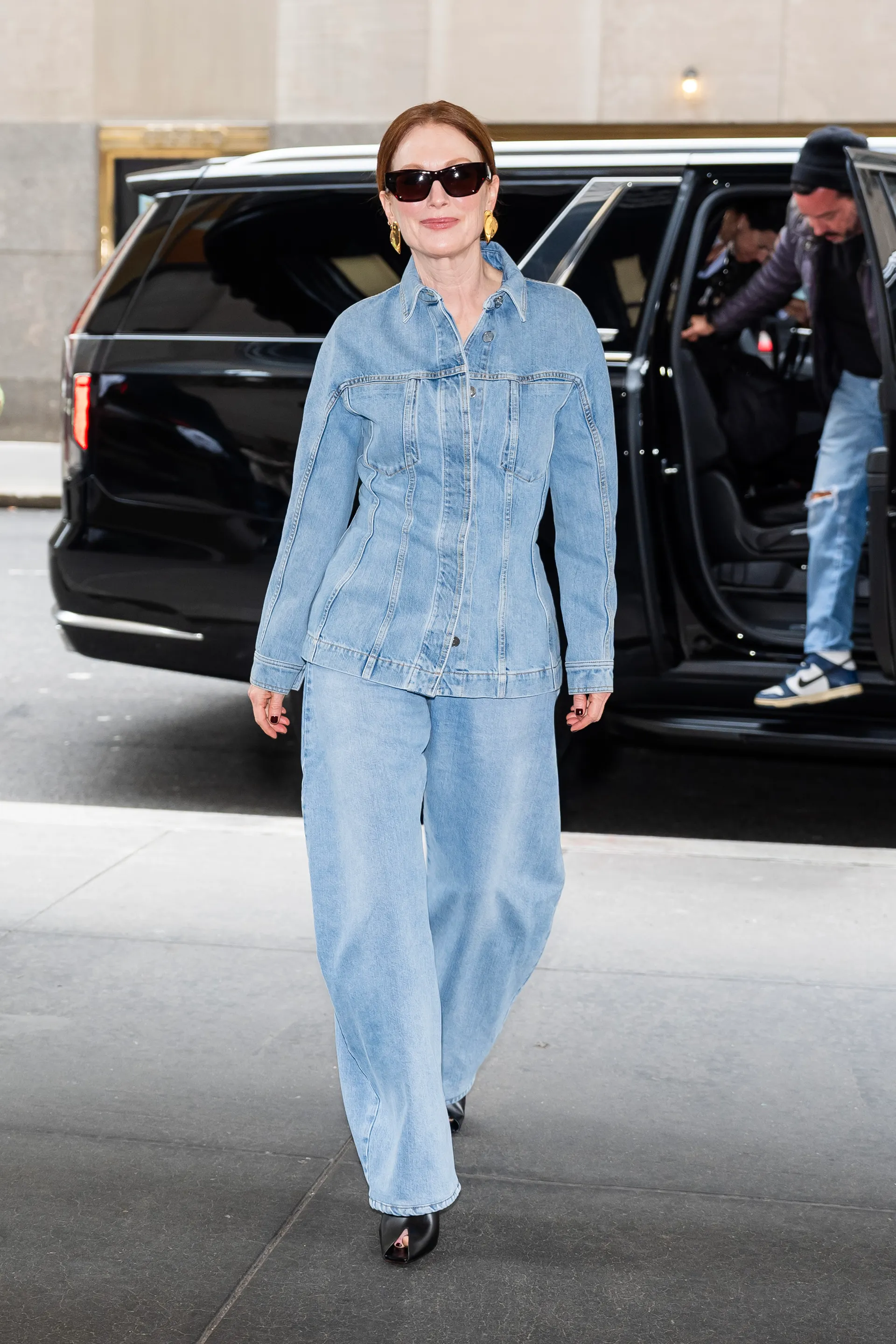
Jennifer Lopez
Lopez was photographed in extra-wide-leg jeans by Citizens of Humanity, paired with a cropped blazer in Beverly Hills. The dramatic silhouette aligns with Bottega Veneta’s 2025 runway vibe.
From: People, Jennifer Lopez's Idea of Casual Is a Pair of $2,505 Patchwork Jeans Teamed with a Fur Coat and Birkin Bag
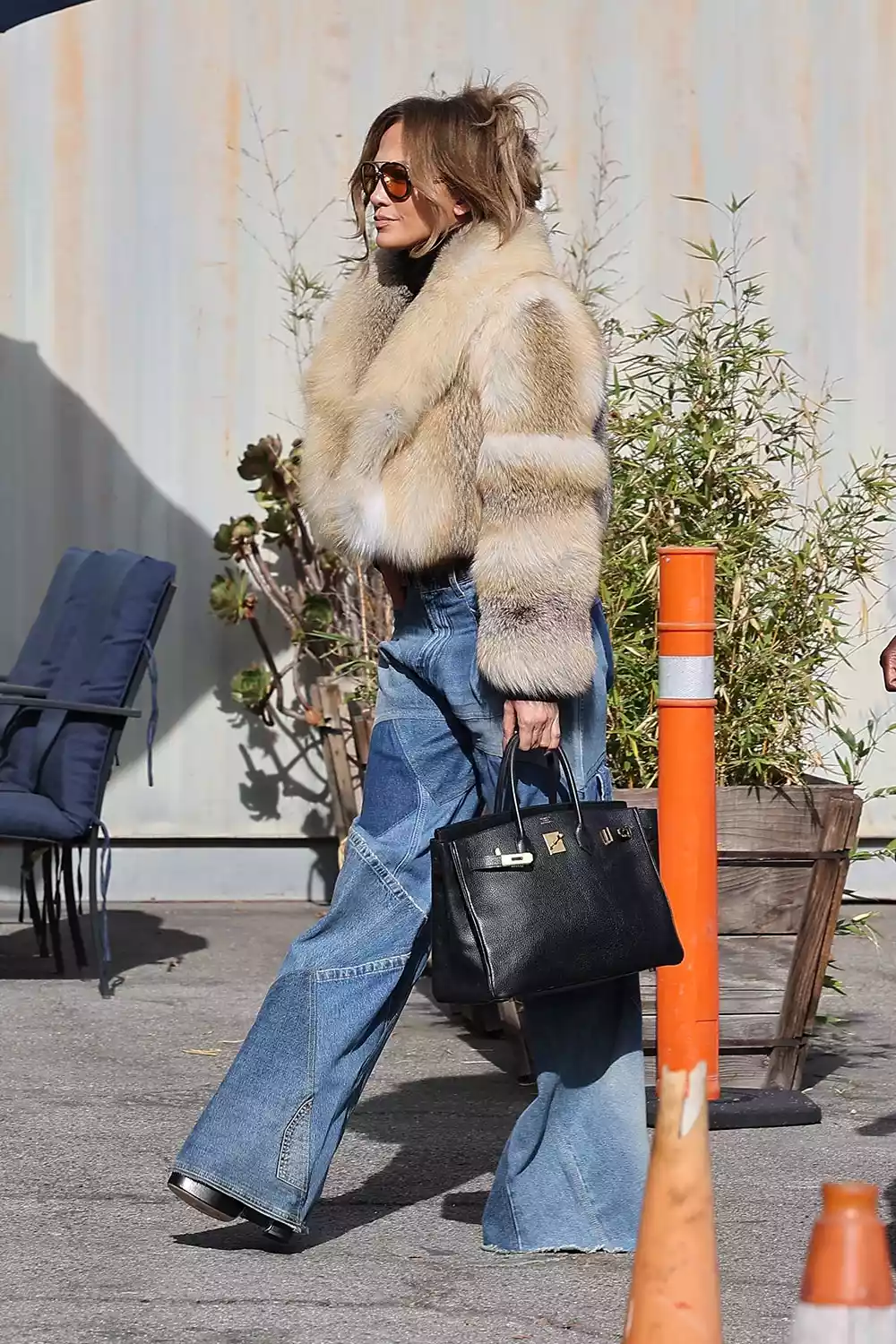
Camila Cabello
Performing on Today Show, Cabello wore a Denimcratic patchwork denim corset and distressed jeans, channeling Britney’s 2001 energy. She swapped to a bedazzled Diesel denim trench for a second act, proving denim’s stage-ready flair.
From : Telegrafi, Camila Cabello takes inspiration from Britney Spears, wears denim on denim
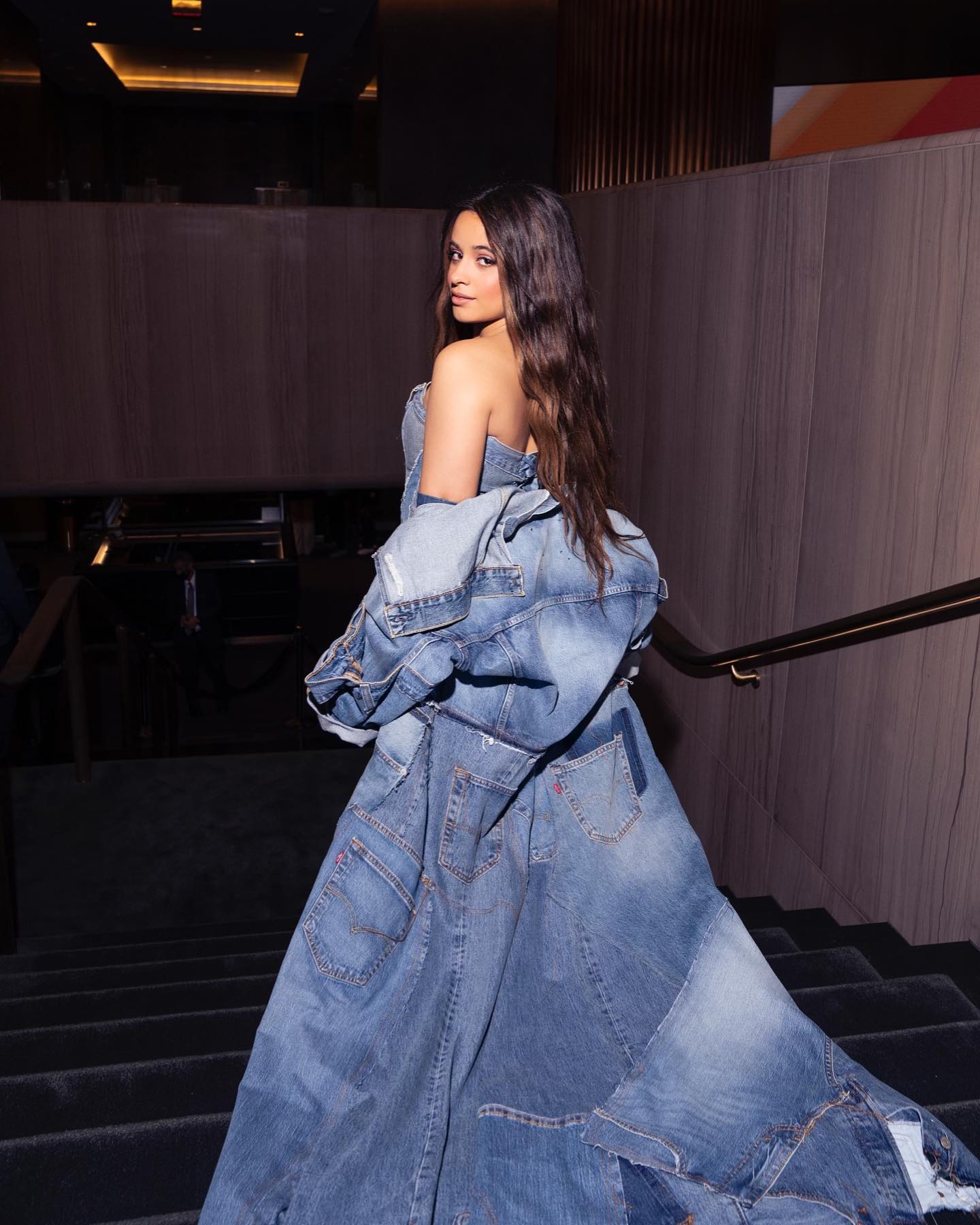
Denim isn’t simply fabric. It’s a badge of identification, a canvas for riot, and a staple that’s outlasted each fashion. I recollect finding a vintage Levi’s jacket at a thrift shop, its faded patches whispering testimonies of a person else’s life, and feeling right away related to decades of wearers earlier than me. From its gritty workwear origins to its starring role on 2025 runways, denim shapes how we pass thru the sector. It’s been the uniform of outcasts, icons, and innovators, and this yr, celebrities are proving it’s as flexible as ever.
3. The Environmental Impact of Denim Production
Every time I slip on my favorite pair of jeans, I’m reminded of their journey that cotton fields, dye vats, factory hums before they landed in my closet. But that journey comes at a cost. Denim production, while crafting one of the world’s most loved fabrics, casts a heavy shadow on the planet. From water-guzzling cotton crops to chemical-laden dyes, the process touches everything from rivers to air quality. Yet, brands and innovators are stepping up, rethinking how jeans are made. Below, I explore the environmental toll of denim production, backed by hard data, and highlight solutions that give me hope for a greener future, all grounded in real-world efforts.
Thirsty Cotton Cultivation
Denim starts with cotton, a crop that drinks deeply. Growing enough cotton for one pair of jeans, about 1.5 pounds, can require up to 7,600 liters of water, mostly for irrigation in arid regions like India or Pakistan ( Kingly Merchandise, 2023 ). I’ve read about Uzbekistan’s Aral Sea, nearly vanished from cotton irrigation, and it hits hard that my jeans shouldn’t dry up lakes. Solutions are emerging: organic cotton, used by brands like Kuyichi, cuts water use to 182 liters per kilogram versus 2,120 for conventional cotton ( Textile Exchange, 2016 ).
(PIC From PIN)
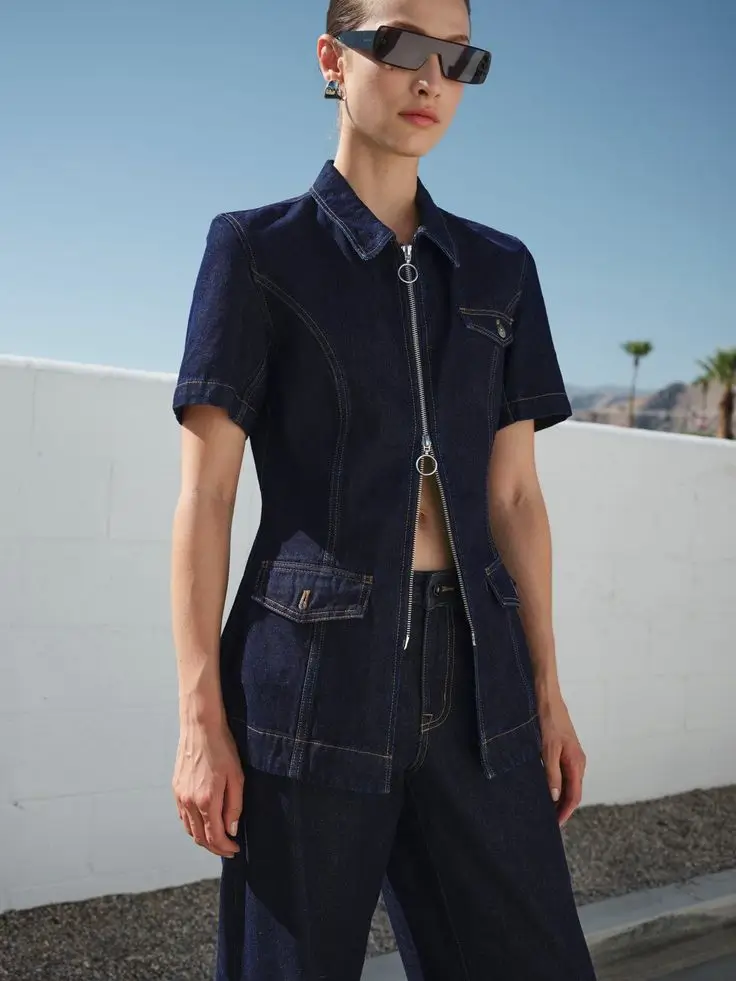
Water-Intensive Dyeing and Finishing
Denim’s iconic blue comes at a price. Dyeing with synthetic indigo and finishing processes like stone-washing can push a pair of jeans’ water footprint to 10,000 liters, with 20% of that from processing alone ( ResearchGate, 2020 ). In places like Bangladesh, untreated dye wastewater and laced with heavy metals like chromium that pollutes rivers, harming ecosystems and communities. But change is brewing. Levi’s Water<Less technology slashes water use by up to 96% in finishing, saving 4 billion liters since 2011 ( Levi Strauss & Co., 2025 ). Ozone washing cuts water and chemicals by 90% compared to traditional methods. These shifts make me optimistic that my next pair might leave rivers cleaner.
Microplastics and Waste
Modern denim often blends cotton with elastane for stretch, but this adds a hidden cost: microplastics. Washing stretch jeans releases up to 50,000 microfibers per cycle, clogging oceans and food chains ( Envirotech Online, 2020 ). With 2 billion pairs made yearly, most end up in landfills that metal rivets and zippers make recycling tricky. It’s sobering to think my old jeans might outlive me in a dump. But brands are fighting back. A.W.A.K.E. MODE’s recycled denim line reuses 500 grams of textile waste per garment, per Textile Exchange ( Textile Exchange, 2022 ). Mud Jeans’ 100% recycled cotton jeans, developed with Saxion University, close the loop, cutting landfill waste . I’m inspired to shop second-hand or choose pure cotton next time.
(PIC From PIN)
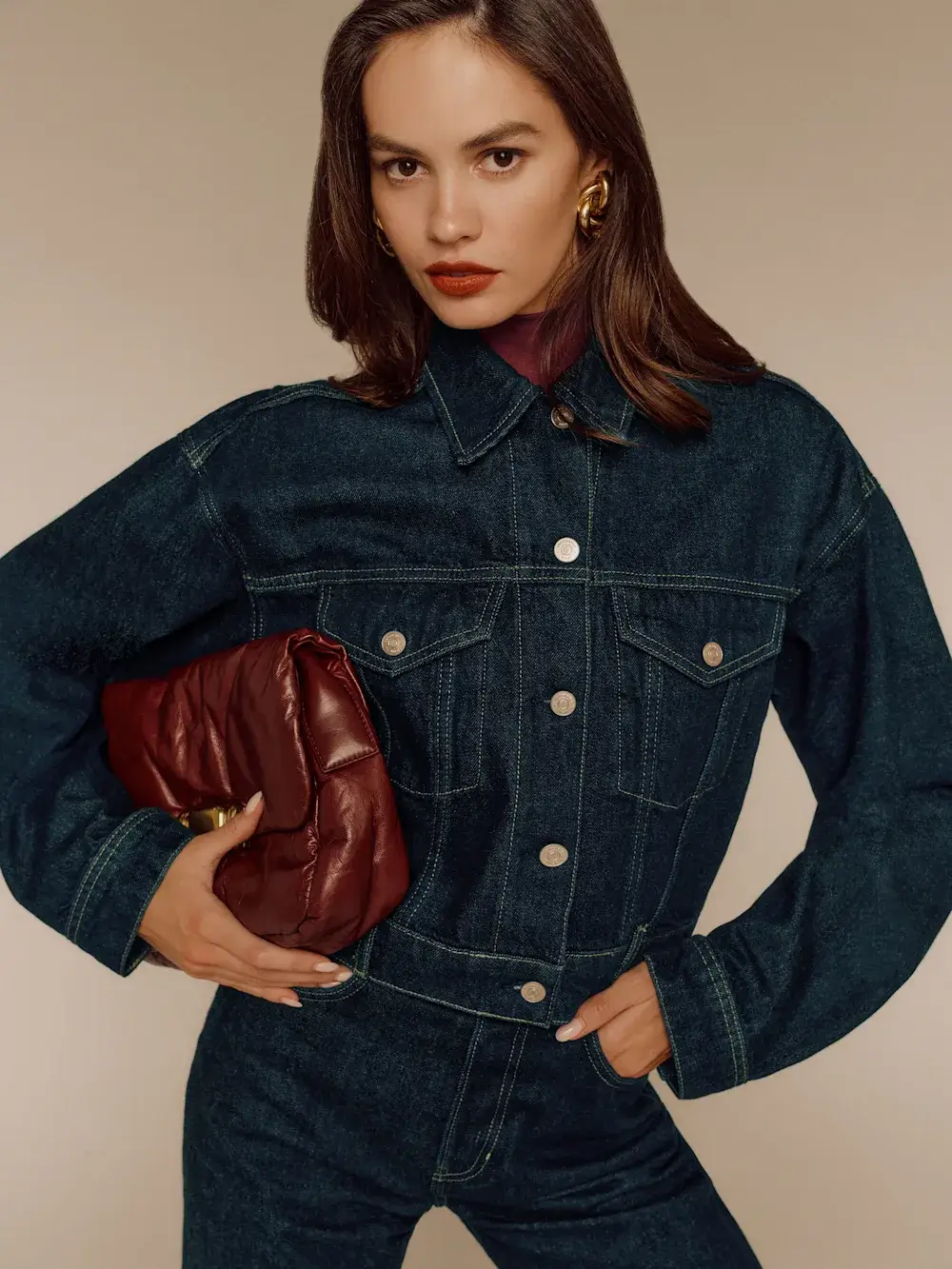
Consumer Impact and Sustainable Choices
We’re not off the hook once jeans hit our wardrobe. Washing them every two weeks racks up 37% of their energy footprint that Americans use more water here than in France, per Levi’s LCA ( ResearchGate, 2020 ). I’ve started washing mine cold and air-drying to cut back. Brands encourage this too according to Nudie Jeans offers free repairs to extend garment life, reducing waste by 20-30%, per the Ellen MacArthur Foundation ( Ellen MacArthur Foundation, 2017 ).
Denim’s environmental toll that water, carbon, waste and is real, but it’s not the whole story. Innovations like recycled fibers, water-saving tech, and consumer awareness are rewriting the script. My jeans feel lighter knowing brands and buyers are pushing for change.
4. Q&A of the Denim Fabric
Q1: How to get blood out of denim?
A1: Spilling blood on your denim whether from a scraped knee or a kitchen mishap that can feel like a disaster, but it’s fixable if you act fast. I learned this the hard way when I nicked my finger and got a red smear on my favorite jeans.
Here’s how to tackle it, based on proven stain-removal techniques:
Act Quickly with Cold Water: Rinse the stain under cold water as soon as possible that warm or hot water can set the blood, making it tougher to remove. Hold the denim inside-out under a running faucet to flush the stain from the back, loosening the blood particles.
Soak and Dab: If the stain persists, soak the denim in a basin of cold water with a pinch of salt for 30 minutes and salt helps break down protein-based stains. Gently dab (don’t rub) with a clean cloth to avoid spreading it. For tougher spots, apply a mix of one part white vinegar to two parts cold water, then blot again.
Wash Carefully: Launder the jeans in a cold cycle with a mild detergent, avoiding bleach, which can yellow denim’s indigo dye. Air-dry to prevent setting any faint residue that dryers can lock in stains. Tide’s care tips confirm air-drying preserves denim’s color and fit ( Tide, 2025 ).
For Dried Stains: If the blood has set, soak overnight in cold water with an enzyme-based detergent like OxiClean, which targets organic stains. Test on a hidden seam first to ensure the dye holds, as some raw denim can fade slightly.
(PIC From PIN)
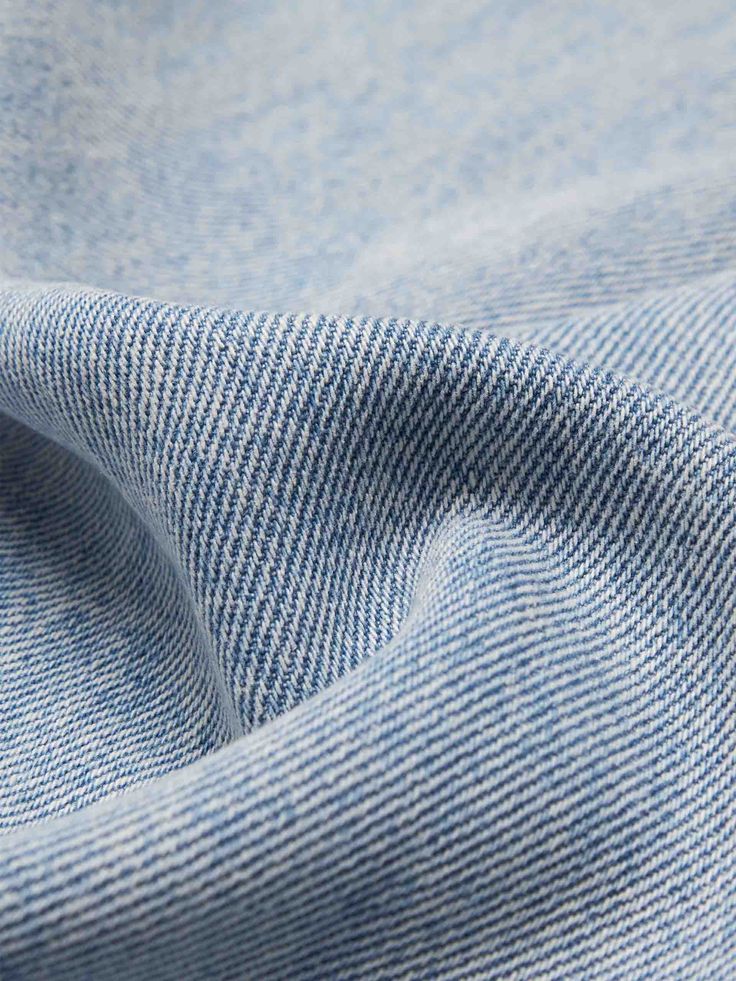
Q2: Is denim cotton?
A2: This question pops up a lot, and I used to wonder the same when I noticed how different my denim jacket felt from a cotton T-shirt. The short answer: denim is primarily cotton, but it’s not that simple. Denim’s usually cotton at heart, but today’s versions often tweak the recipe for style or function. It’s still the cotton base that makes denim feel like denim.
Q3: How to soften denim jeans?
A3: New denim jeans, especially raw or selvedge ones, can feel like wearing a board that my first pair of Nudie Jeans had me waddling for weeks! Softening them takes time, but you can speed things up without ruining their look.
(PIC From PIN)
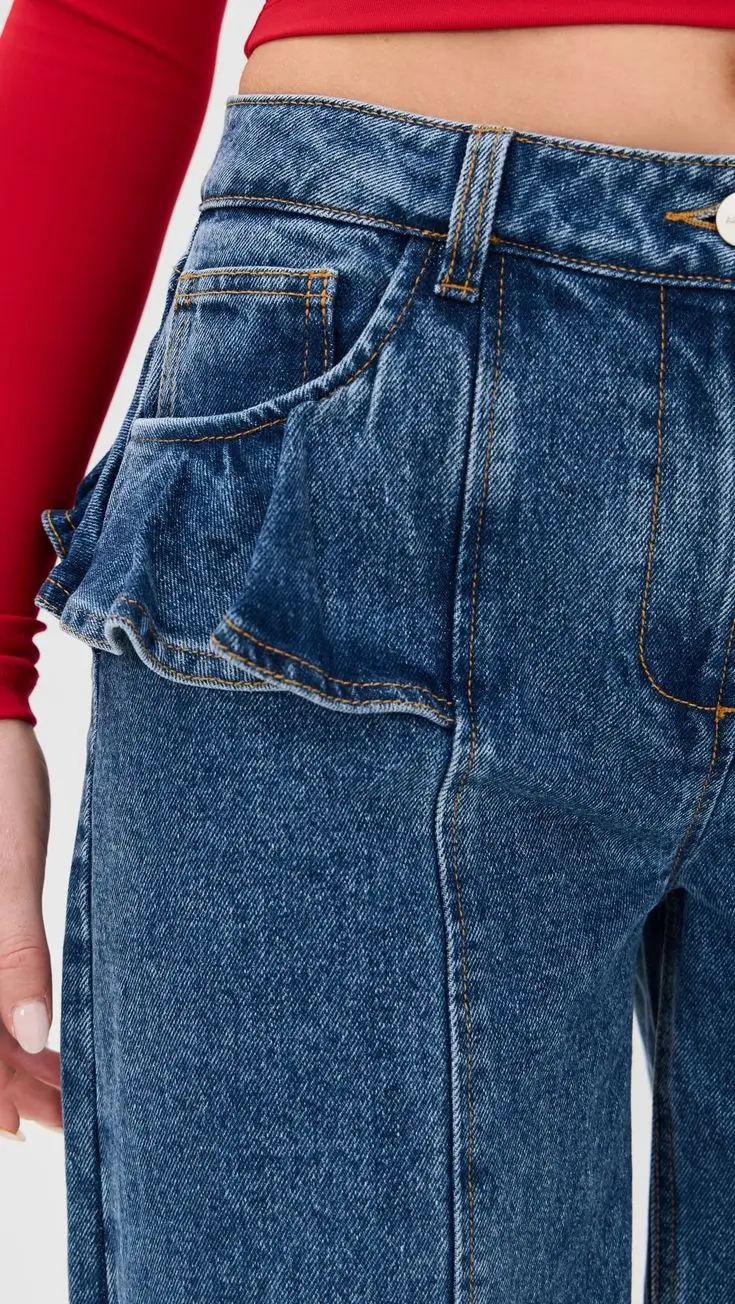
Wash with Care: Machine-wash your jeans in cold water with a mild detergent to relax the fibers hot water shrinks cotton, risking a bad fit. Add half a cup of white vinegar to the rinse cycle; its acidity softens without fading indigo. Tumble dry on low for 10-15 minutes, then air-dry to avoid over-shrinking that Levi’s recommends this balance to preserve shape ( Levi Strauss & Co., 2025 ).
Soak for Suppleness: Fill a tub with lukewarm water and a tablespoon of fabric softener, then soak the jeans for an hour. Rinse thoroughly and air-dry. This worked wonders on my stiff selvedge pair, loosening the 14-ounce weave without losing its structure.
Wear Them In: The best softener is time that wear your jeans as much as possible, especially for raw denim. Walking, sitting, and bending stretch the cotton naturally. Through my past experience indicates that it is recommended to wear unfinished jeans for six months before washing to maximize fading and softness.
5. Denim Fabric Representative Products
Pants
Denim has a way of feeling like an vintage buddy that dependable, versatile, and full of tales. I nonetheless smile thinking about my first pair of excessive-waisted jeans, hugging my curves simply right, or the denim skirt I wore on a summer road trip, breezy but bold. In 2025, denim pants and skirts are stealing the highlight, mixing nostalgia with fresh cuts and sustainable twists. From runway stars to street-style staples, those pieces outline what denim does nice: adapt and endure. Below, I highlight the most consultant denim pants and skirts of the instant, spotlighting particular merchandise from relied on manufacturers, all grounded in what’s trending now and built to remaining in your wardrobe.
Recommend 01: A.P.C. - 'kylie' Straight Leg Jeans
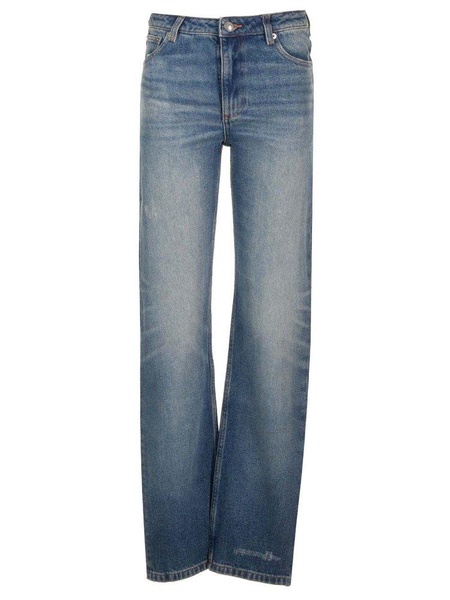
Recommend 02: A.W.A.K.E. MODE - Cut-out straight-leg jeans
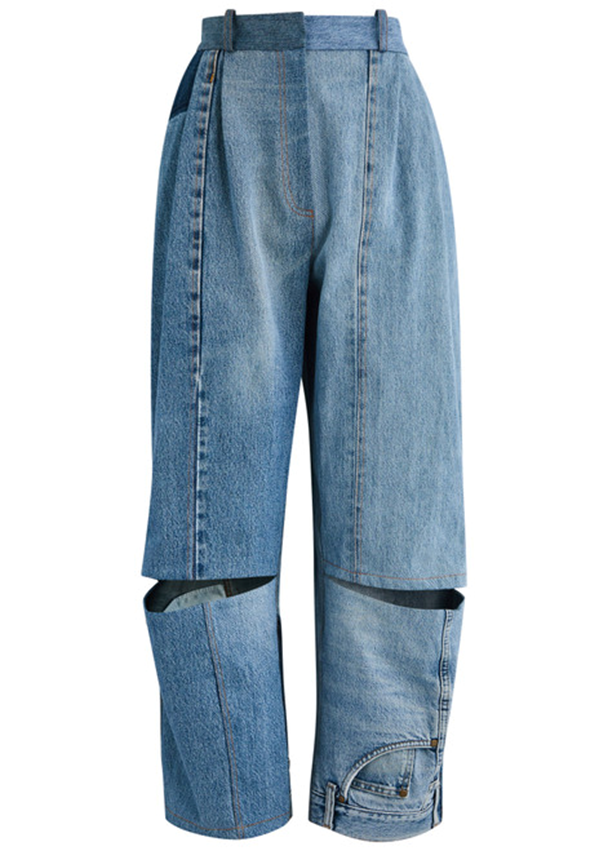
Skirt
Denim skirts are back with a vengeance in 2025, trading tight minis for flowing maxis and structured midis that move with you. They’re the perfect swap when jeans feel too predictable, offering breezy comfort and endless styling options. Here are three iconic skirts ruling the year, each a testament to denim’s chameleon-like charm.
Recommend 01: A.L.C. - Denim skirt
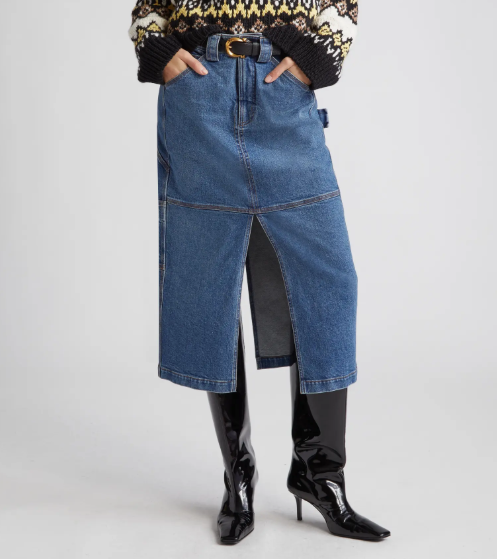
Recommend 01: Angelo Marani - Denim skirt
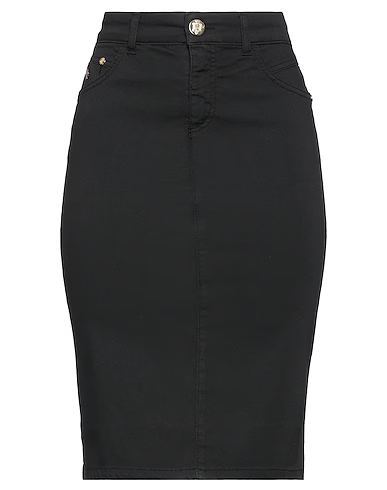
6. My Point
Denim feels like a conversation with time that every rip, fade, and softened patch carries a piece of where I’ve been. My oldest pair of Levi’s, scuffed from a summer hike, isn’t just clothing; it’s a scrapbook of late-night talks and spontaneous road trips. To me, denim’s genius lies in its contradictions: it’s tough enough for a miner’s pickaxe yet gentle enough to hug you back after years of wear. It’s a rebel’s uniform, a designer’s canvas, and a sustainable pioneer all at once. As I’ve explored denim’s world that from its cultural swagger to its 2025 runway glow and I’ve come to see it as more than fabric. It’s a bridge between who we are and who we want to be, and in a fast-moving world, that’s worth holding onto.
My point? Denim is a survivor, a shapeshifter, a mirror. It carries history that miners, punks, runways and still looks forward, greener and braver. I believe its future lies in doubling down on sustainability while staying unapologetically itself. So, wear your denim proud, patch it when it tears, and let it tell your story. In a world that rushes past, denim slows down and says, “I’m still here.”